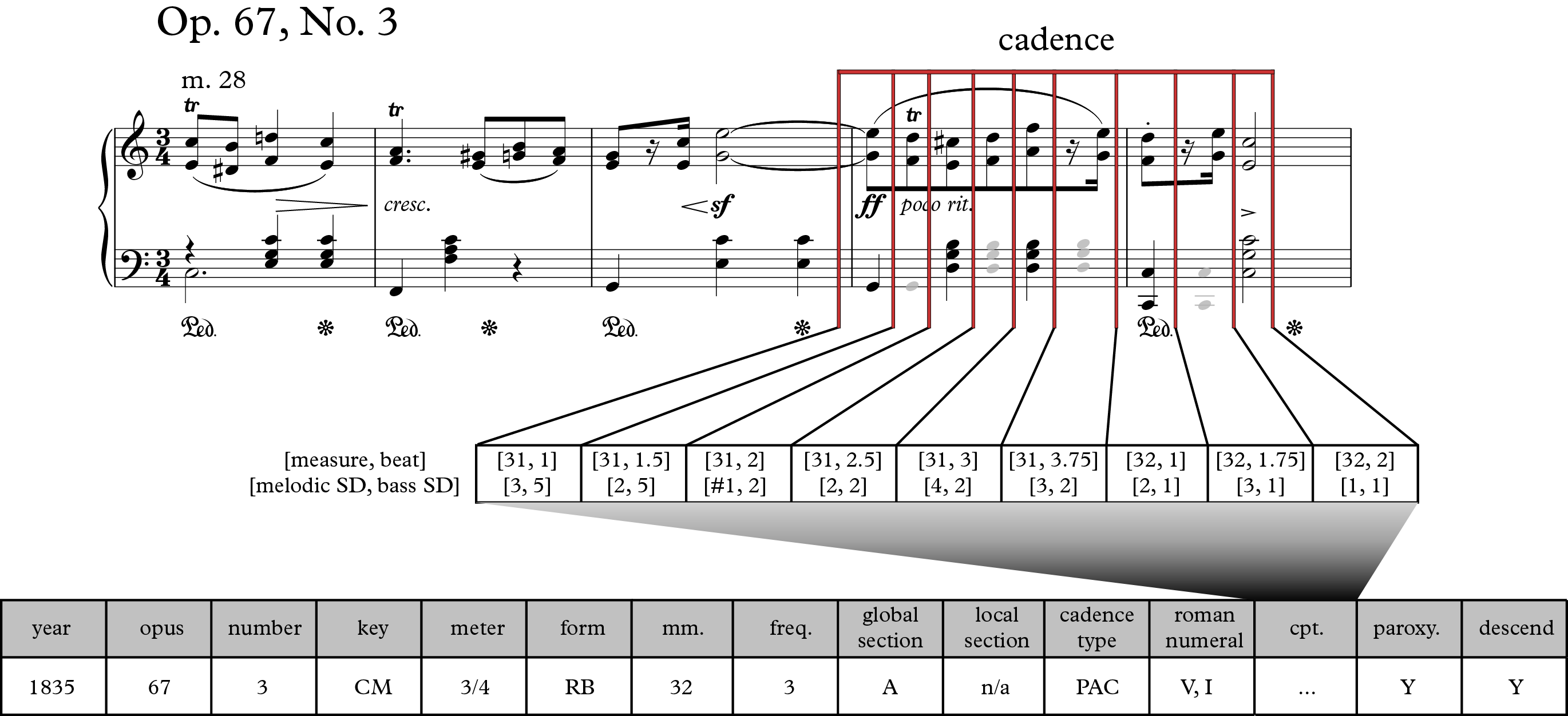Chord Encoding
Following encoding methodologies such as Cuthbert and Ariza (2010) and White and Quinn (2018),
we encoded cadences from a discrete time series of vertical musical "slices." We considered cadences
to be comprised of (at most) two chords: 1) The chord it concludes with and 2) the chord immediately prior.
Within those chords, vertical slices capture the ongoing counterpoint. An example in shown below.
In the example, the cadence includes V and I in C major, shown in the "roman numeral" column. The vertical slices
are used to encode the outer-voice counterpoint. We call each slice a stage in the cadence; this cadence includes
9 stages. Each stage includes the measure in the piece and beat position, followed by counterpoint in scale degrees.
So "[31,1][3,5]" means the music has a cadence slice starting on measure 31, beat 1 with scale degree 3 in the soprano
and 5 in the bass.
